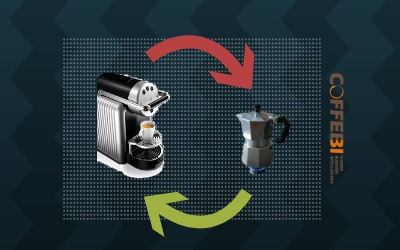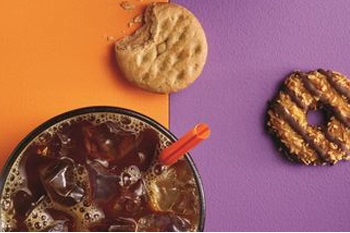Moka Pot vs. Pod Machine, Is The Moka Pot Destined To Be Forgotten?
A coffee break starts with a good coffee, to no one’s surprise. Thanks to the pod or capsule machines, we are able to consume our drink of choice almost immediately, hot and freshly prepared. However, it wasn’t always this easy. The first official coffee machines were destined for cafès, bars and places of public exchange, as their elevated cost made it hard to sell them for domestic use.

Instead, there was another tool to make coffee at home: the Moka pot. These pots have been on the market since the early 20th century and have become a symbol of traditional coffee, both in Italy and worldwide. But with the domestic diffusion of the pod machine, is the classic Moka pot destined to be forgotten?
It is still up fordebate whether Mokas will survive: this extract from Il Corriere states very clearly that the Bialetti had a major net loss of 15.3 million euro sand the doubts on the continuity of the company are rising sharply. On top ofthat, the demand for Moka pots is visibly shrinking due to a few different factors, such as those reviewed by The Guardian:
“Yes, [the Moka pots] are cheap, but the coffee is often hugely bitter and over-extracted rocket fuel. Priming the chamber with coffee that is ground to the right size is fiendishly difficult and coffee should not be boiled. For maximum character, brew at 90C-96C (194F-205F). Takes practice: 5/10”
And while it is true that using a machine which hasn’t changed much in it’s design since its debut in 1933 is not as easy as modern machines that work with the press of a button, the so called “bitterness” is proof that the taste test wasn’t run in the right way. A bitter coffee from a Moka is often the result of either overpacking the basket with ground coffee, brewing at a temperature higher than recommended or that extraction process of the beverage has gone on for too long.
Oftentimes, these mistakes are made because the one who is preparing the Moka doesn’t really know or understand this process of brewing. The boiling water in the lower chamber creates steam, which pressurizes and pushes the water upward, towards the basket with the ground coffee and then into the column of the upper chamber, where it then comes out. There are several details to making good coffee with a Moka pot that are easy to overlook if you aren’t used to this method of brewing, but alas, this all adds to the difficulty of this traditional and symbolic tool.
Of course, using a pod machine has become more common nowadays, both due to its ease of use in a domestic context and its affordability. It’s all a matter of choosing the right kind for your own needs or to your preference. However, if you don’t already own a pod machine, be prepared to have your creativity limited, as certain machines will only becompatible with a certain brand of pod. While there is a certain variety of pods to choose from, if you prefer to mix blends, then pods may not be your favourite method of brewing. And, mind you, you will be able to buy only pods that are compatible with your machine (which are, unsurprisingly, sold by the company owner of the machine patent).
The pod machine saw its rise to domestic use in the early 1970s, starting with Nestle’s Nespresso machine, which gained popularity for being the first single serve coffee machine. This was followed by Lavazza in 1983, Illy in 2007 and Bialetti in 2013.
However, while there may not be many downsides to these machines reaching the homes of coffee drinkers, one particular disadvantage has been drawing consumers’ attention in the last few years: the matter of the pollution caused by the plastic pods. It has been estimated that plastic takes up to 500 years to deteriorate. Nespresso has expressed its concern withthe issue as shown in this read from the ABC:
“The global market for fresh ground coffeepods went from $7 billion in 2010 to $17 billion in 2015. Last year, Australians spent $215 million on coffeepods.
Former Nespresso chief executive Jean-Paul Gaillard says it is time forconsumers to think about the price of convenience.
“It will be a disaster and it’s time to move on that. People shouldn’tsacrifice the environment for convenience,” he said.
The article also states how they wish to solve this issue and arrive at possible solutions, such as teaming up with a recycling company like TerraCycle, in order to fix the problem within the limits of what can be done. On one side, there’s hope to finding an environmentally friendly option, on the other, we have solutions like Hamburg’s ban on pods, as postedof the BBC News.

